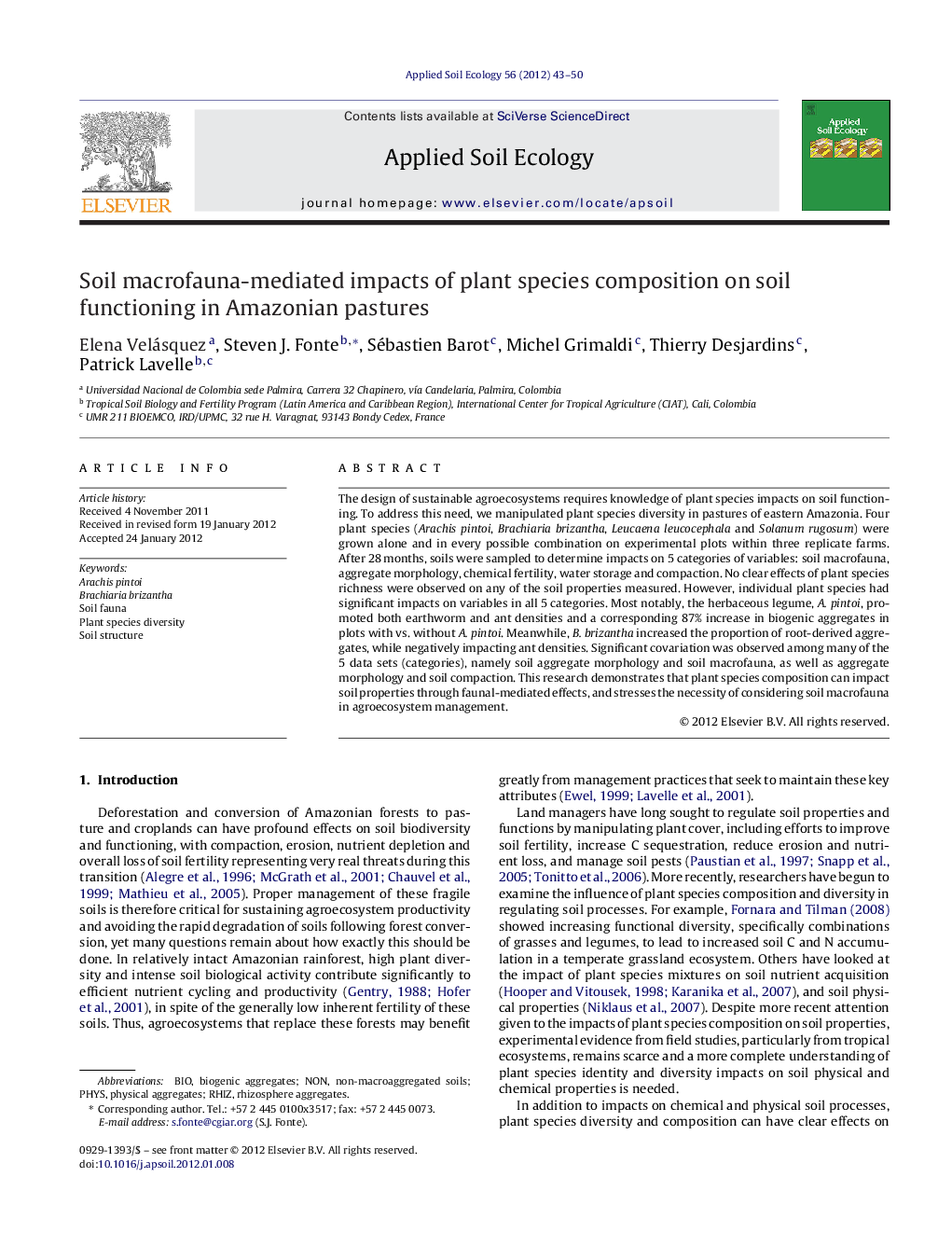| Article ID | Journal | Published Year | Pages | File Type |
|---|---|---|---|---|
| 4382574 | Applied Soil Ecology | 2012 | 8 Pages |
The design of sustainable agroecosystems requires knowledge of plant species impacts on soil functioning. To address this need, we manipulated plant species diversity in pastures of eastern Amazonia. Four plant species (Arachis pintoi, Brachiaria brizantha, Leucaena leucocephala and Solanum rugosum) were grown alone and in every possible combination on experimental plots within three replicate farms. After 28 months, soils were sampled to determine impacts on 5 categories of variables: soil macrofauna, aggregate morphology, chemical fertility, water storage and compaction. No clear effects of plant species richness were observed on any of the soil properties measured. However, individual plant species had significant impacts on variables in all 5 categories. Most notably, the herbaceous legume, A. pintoi, promoted both earthworm and ant densities and a corresponding 87% increase in biogenic aggregates in plots with vs. without A. pintoi. Meanwhile, B. brizantha increased the proportion of root-derived aggregates, while negatively impacting ant densities. Significant covariation was observed among many of the 5 data sets (categories), namely soil aggregate morphology and soil macrofauna, as well as aggregate morphology and soil compaction. This research demonstrates that plant species composition can impact soil properties through faunal-mediated effects, and stresses the necessity of considering soil macrofauna in agroecosystem management.
► Plant species identity, not species richness, showed the strongest influences on soil properties. ► Soil macrofauna were critical in mediating vegetation impacts on soil structure. ► Significant covariation was observed between key biological, physical and chemical soil attributes.
